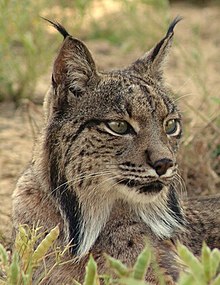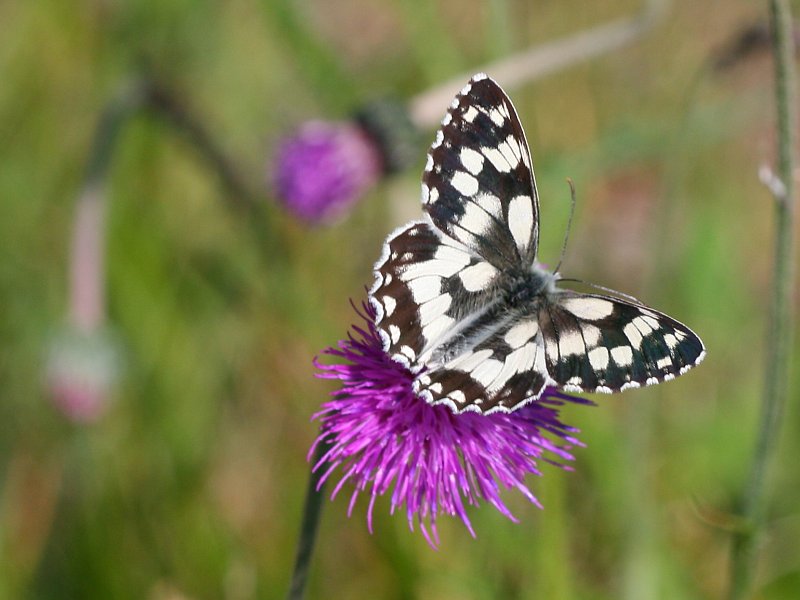“Assisted colonization” (AC) may not be a household term
yet, but chances are it will become an increasingly common topic over the next
few years—or, at least, it should,
according to scientists writing in a recent issue of the journal Frontiers in Ecology and the Environment. The
main goal of the researchers, both of whom are affiliated with Seattle’s
University of Washington, was not to take a pro- or anti-AC stance, but to
argue that it is time for discussions about this topic to be moved out of the
ivory tower and into the community at large.
Assisted colonization is a wildlife management technique
whereby individuals are intentionally relocated to places outside their native
ranges in an effort to protect them from anthropogenic threats. The main threat
considered here was climate change, which is projected to alter some habitats
so quickly that their inhabitants will not be able to adjust in time (by
adapting or by moving themselves to more suitable areas, for instance). Within
the scientific community, the concept of AC has been met with both praise and alarm.
Some researchers feel that it is an excellent tool for species conservation,
while others believe it will cause more harm than good. One particular worry is
that assisted colonization efforts are merely sanctioned introductions of potentially
destructive nonnative species that may have adverse impacts on local species
and, potentially, entire ecological processes.
(The Florida Torreya, Torreya taxifolia.
To combat the “shrinking native range” of this species, an
environmental group called the Torreya Guardians has transplanted seedlings to
North Carolina.)
While the authors feel that this is one of many valid and
important questions, they also believe that it is time to take a step back and
take a broader view of the debate. They suggest that we need to focus our
attention on three activities: weighing the consequences of action versus
inaction; deciding, as a society, the extent of “ecosystem engineering” that we
feel is appropriate; and considering alternative approaches to AC.
The action vs. inaction debate is particularly fraught
because it involves so much conjecture. Predictions about the outcomes of ACs
(or lack thereof) can be informed by forecasts of climate change, data
collected from previous reintroductions (for instance, of critically endangered
species that are raised in captivity and then released into the wild),
experiments, and historical records associated with previous climate shifts.
Despite these potential sources of information, it is not always easy to
identify which species are at the greatest risk, let alone determine how they
might respond to, or influence, a new habitat—a habitat that, itself, will
continue to change as climatic patterns shift. Furthermore, there are also moral
and ethic issues to consider: Is it better to prevent the global extinction of
one species even when it causes the local extinction of another, or is it
tolerable to lose a single species if doing so prevents potential loss of
ecosystem function at its proposed AC site?
(The Iberian lynx, Lynx pardinus, is a critically
endangered species that has become “trapped” in pockets of subpar habitat in
Spain. Researchers have proposed assisted colonization as a method for reducing
the likelihood that this species will go extinct.)
The second issue, ecosystem engineering, revolves around the
need to decide what we want for our ecosystems. They provide us with a variety
of services (including, but not limited to, space for recreation, carbon
sequestration, water filtering, and the production of clean air) upon which we
are extremely reliant. Thus, do we want to maximize one or more of these
services even if that means allowing species to go extinct? Do we want to protect
or preserve as many species as possible, even if that means we need to find
alternative sources of particular services? Or do we want to “let the chips
fall where they may” and refuse to interfere? Rather than arguing for or
against any of these options, the authors simply point out that these are big
decisions that impact everyone; thus, while scientific research can help
educate people about the pros and cons of the different choices, debates on
these issues should not just be held among researchers.
Finally, the authors focus on landscape connectivity, a
topic that they say has been “noticeably absent” from the AC debate.
Connectivity of habitats has been achieved for a number of organisms using
techniques such as wildlife crossing structures and dam removal. Although these
methods are often focused on allowing individuals to utilize and recolonize
native habitats from which they have been cut off by anthropogenic structures, this
practice—like assisted colonization—can also result in access of new areas by
nonnative species. Despite this, fewer people object to connectivity efforts
than to ACs. The authors ask whether these objections are associated with the amount of intervention (since building a
connecting overpass, for instance, allows animals to move themselves, in
contrast to having humans physically relocate animals during AC efforts), or
with the potential effects of
intervention. They point out that proponents of connectivity may also feel that
it is a morally superior option as it restores “the natural order of things.”
Ultimately, the authors feel that both options should be kept on the table,
since particular species may respond better to one method than the other.
(Managers in northern
England investigated the utility of assisted colonization for the marbled white, or Melanargia galathea. Individuals were
relocated as far as 65 km beyond the margins of their native range to sites
that were “predicted to be climatically suitable.”)
Overall, the authors hope that the assisted colonization
debate can be “reframed” in the context of these three major issues. By
focusing on these ideas and broadening the dialogue to include both
non-scientists and scientists, it should be possible to shift from a “purely
academic” debate to one that will yield concrete plans about how to proceed.
---
For supplemental images associated with this post, please
visit the Anthrophysis pin board at Pinterest.
Lawler, J.J. and Olden, J.D. 2011. Reframing the debate over
assisted colonization. Frontiers in Ecology and Environment 9(10):569-574.
Thanks to the following websites for providing the images
used in this post:
http://www.thesanguineroot.com/?m=20110309
http://en.wikipedia.org/wiki/Iberian_Lynx
http://www.korseby.net/outer/fauna/lepidoptera/index.html



No comments:
Post a Comment